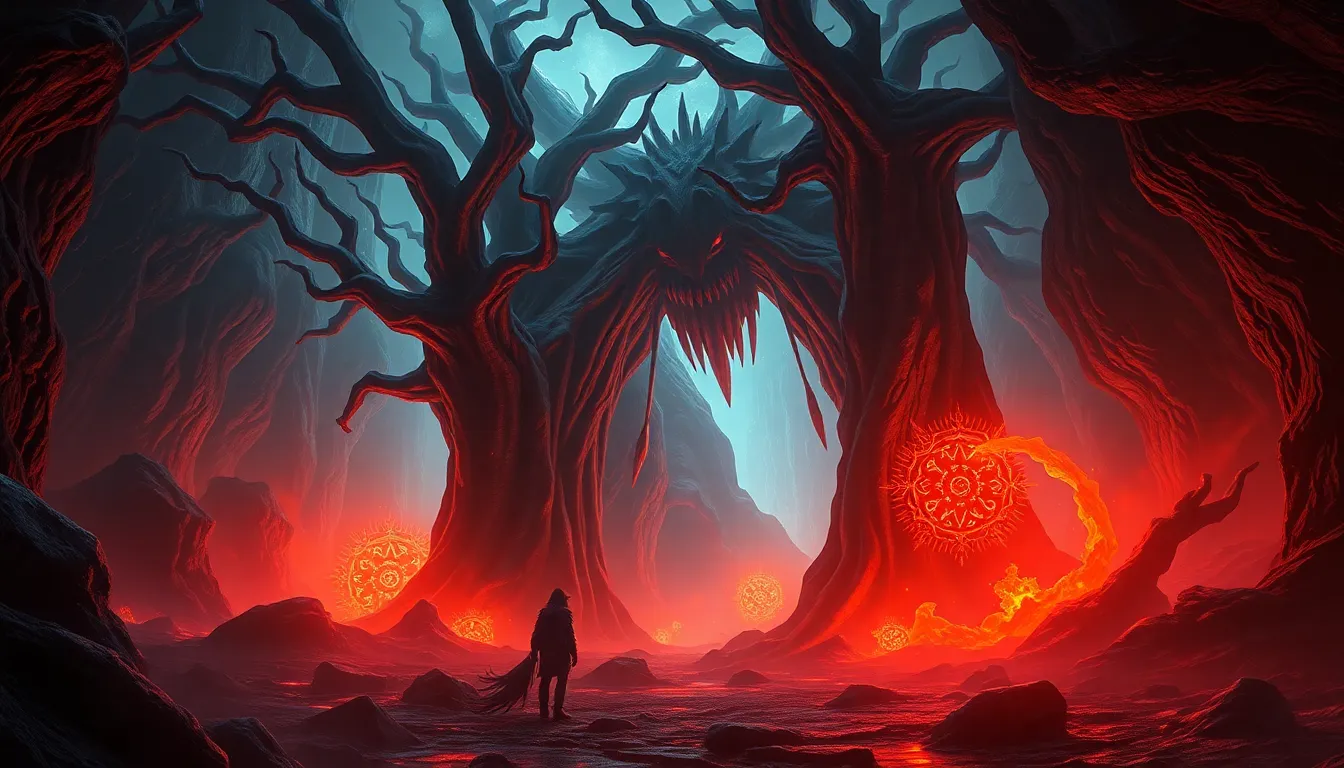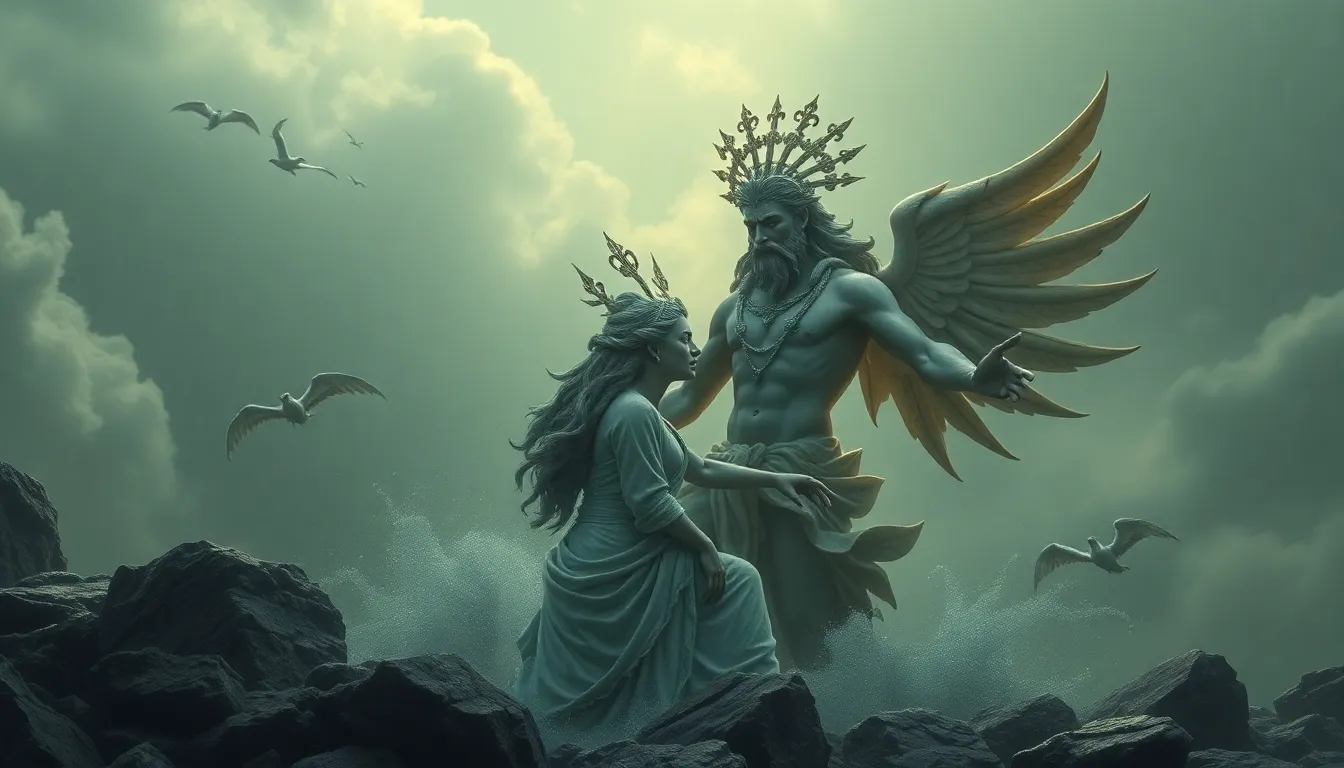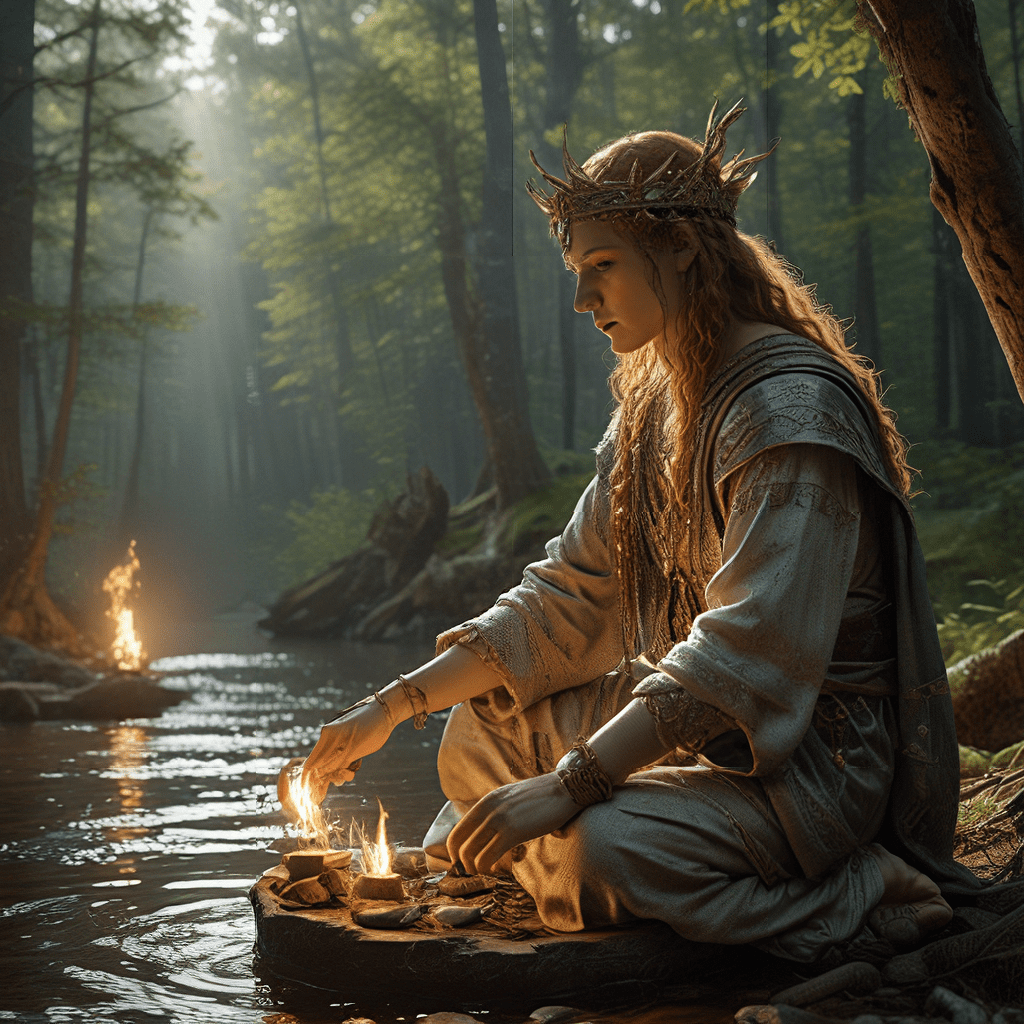The Underworld: Myths That Explore the Nature of Fear
I. Introduction to the Underworld in Mythology
The concept of the Underworld exists in various forms across many cultures, representing a realm where souls go after death. This notion serves as a crucial element in mythological narratives, providing a backdrop for understanding life, death, and the human condition. The Underworld is often depicted as a place of darkness, danger, and unknown horrors, making it a powerful symbol of fear.
II. The Concept of Fear in Mythology
Fear is an intrinsic part of the human experience, rooted deeply in psychology. Myths often reflect the collective fears and anxieties of a culture, acting as a mirror to societal concerns. The Underworld, as a recurring theme in mythology, embodies these fears in various forms:
- Fear of death: The uncertainty that surrounds what happens after death.
- Fear of the unknown: The challenges and dangers associated with the afterlife.
- Fear of judgment: The anxiety over being judged for one’s actions in life.
Thus, the Underworld serves as a manifestation of these fears, allowing individuals and cultures to confront their anxieties in a narrative form.
III. The Underworld in Ancient Greek Mythology
In Ancient Greek mythology, Hades is the god of the Underworld, ruling over the realm of the dead. The journey to the Underworld is often depicted as perilous, requiring a crossing of the River Styx with the help of Charon, the ferryman. Souls of the deceased pay him with an obol, a small coin, to ensure safe passage.
Symbolism plays a significant role in Greek myths, with the Underworld often representing:
- Finality: The end of life and the permanence of death.
- Isolation: The separation of souls from the living world.
- Judgment: The weighing of one’s deeds and their consequences.
This portrayal of the Underworld evokes fear as it embodies the inevitable fate that awaits all humans.
IV. The Underworld in Norse Mythology
In Norse mythology, Hel is the goddess who presides over the Underworld, also named Hel. The Norse view of death and the afterlife is complex, emphasizing valor in life and the fear of dying unheroic deaths. The significance of the afterlife varies, with noble warriors entering Valhalla, while others face a more uncertain fate in Hel’s realm.
The fear of the unknown permeates Norse culture, as the afterlife is often shrouded in mystery. Key aspects include:
- Fear of an uncertain fate: The anxiety surrounding what happens after death.
- Death in battle: The importance of dying honorably to secure a place in Valhalla.
- Ragnarök: The fear of an apocalyptic end that affects all beings, including gods.
V. The Underworld in Egyptian Mythology
The Duat is the realm of the dead in Egyptian mythology, where souls journey after death. Anubis, the jackal-headed god, plays a vital role in guiding souls and overseeing the weighing of the heart against the feather of Ma’at, symbolizing truth and justice.
Cultural fears surrounding death and judgment are prevalent in Egyptian beliefs:
- Judgment: The fear of being deemed unworthy and facing eternal punishment.
- Preservation: The necessity of mummification and burial rites to ensure safe passage.
- Legacy: The importance of leaving a mark on the world to secure a place in the afterlife.
VI. The Underworld in Asian Mythologies
In Hindu and Buddhist traditions, Yama is the god of death and the ruler of the Underworld. He embodies the moral order of the universe, determining the fate of souls based on their actions in life.
In Chinese mythology, the Underworld is often depicted as a bureaucratic realm where souls are judged and assigned to various levels of existence based on their earthly deeds. Common themes include:
- Morality: The consequences of one’s actions and the importance of righteous living.
- Rebirth: The cyclical nature of life, death, and rebirth.
- Fear of dishonor: The societal pressure to maintain family honor through good deeds.
VII. The Underworld in Indigenous Mythologies
Indigenous cultures often have unique perspectives on the Underworld, viewing it as a realm intertwined with nature and spirituality. In many Native American cultures, the Underworld is depicted as a place of transformation and renewal.
Fear plays a significant role in creation stories and beliefs about the afterlife:
- Connection to nature: The Underworld is often seen as a natural extension of the Earth.
- Spiritual guidance: The belief in spirits guiding souls through the afterlife.
- Balance: The need to maintain harmony between the living and the spiritual realms.
VIII. Symbolism and Imagery of the Underworld
Throughout cultures, specific symbols and imagery are associated with the Underworld, representing fear and the unknown. Common symbols include:
- Darkness: A universal representation of fear and the unknown.
- Crossroads: Symbolizing choice and the journey between life and death.
- Water: Often depicted as a barrier to be crossed, representing transition.
Artistic representations of the Underworld often capture the essence of fear, employing vivid imagery to evoke strong emotional responses. This psychological impact can reinforce societal fears about death and the afterlife.
IX. The Evolution of Underworld Myths in Modern Culture
Ancient myths about the Underworld have significantly influenced contemporary literature and media. Modern adaptations often reinterpret these themes, reflecting current societal fears and anxieties:
- Films: Movies often explore the concept of the Underworld, utilizing it as a backdrop for horror and adventure.
- Books: Literature frequently revisits ancient myths, giving them new relevance in today’s context.
- Video games: Many games incorporate Underworld themes, allowing players to confront their fears in interactive ways.
X. Conclusion: The Enduring Influence of the Underworld
The Underworld remains a powerful symbol in mythology, exploring the nature of fear and the human condition. Across cultures, it serves as a reflection of societal anxieties about death, judgment, and the unknown. The rich tapestry of Underworld myths continues to resonate, providing insights into our deepest fears and the universal quest for understanding life and death.




